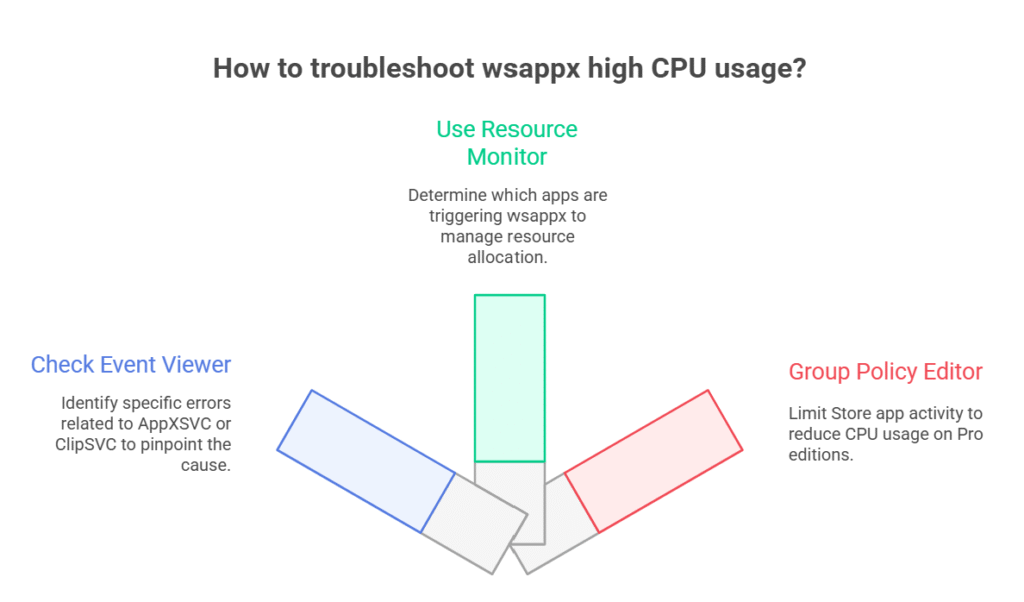Wsappx hogging your disk or CPU, you’re not alone. In fact, “wsappx” is one of the most searched tech mysteries for Windows users in 2025. What is wsappx, and why does it sometimes cause high disk usage? Is it a virus, or is it something your PC actually needs? Let’s break down everything you need to know about wsappx, from what it does to how you can manage it—without the tech jargon.
What Is WSAPPX? The Mystery Process in Task Manager
Let’s start with the basics: what is wsappx? If you’re seeing this process in Task Manager, you’re probably using Windows 10, Windows 11, or even the latest Windows 12. WSAPPX is a legitimate Windows process, not a virus or malware. It’s responsible for managing, installing, updating, and removing apps from the Microsoft Store.
But there’s more to it. WSAPPX isn’t just one process—it’s actually a group of services, including the AppX Deployment Service (AppXSVC) and the Client License Service (ClipSVC). On some systems, you might also see the Windows Store Service (WSService). These services work together to make sure your apps install and update smoothly.
Why Does WSAPPX Use So Much Disk or CPU?
Here’s the pain point: sometimes, wsappx can cause high disk usage or even spike your CPU. You might notice your PC slowing down, fans spinning up, or apps lagging. This is especially common when you’re installing or updating apps from the Microsoft Store.
But why does wsappx high disk usage happen? The answer is simple: when you install, update, or even uninstall apps, Windows needs to write and read a lot of data. WSAPPX handles all of this in the background. Sometimes, it can get stuck or use more resources than expected, especially if there are pending updates or issues with the Store.
“Every time I update an app, wsappx goes wild and my laptop slows to a crawl. Is there any way to fix this?” — frustrated user, 2025
Let’s dig deeper into what’s really happening.
Breaking Down the WSAPPX Services
AppX Deployment Service (AppXSVC)
This is the core of wsappx. The AppX Deployment Service is responsible for deploying (installing), updating, and removing Store apps. It’s what makes the Microsoft Store work behind the scenes.
Whenever you install a new app, AppXSVC kicks in. It also runs when Windows updates built-in apps or when you uninstall something. If you see wsappx high disk usage, AppXSVC is usually the culprit.
Client License Service (ClipSVC)
This service manages licenses for Store apps. It checks that you have the right to use paid or protected apps. If ClipSVC isn’t running, some apps might not launch at all.
Windows Store Service (WSService)
On some versions of Windows, you’ll see WSService. It’s similar to ClipSVC and helps manage Store app infrastructure. It’s less common on newer builds but still pops up on some systems.
Is WSAPPX Safe? Can You Disable It?
Let’s clear up a common fear: wsappx is not a virus. It’s a core part of Windows, and disabling it can break your ability to install or update apps from the Microsoft Store. In fact, Windows will often restart the service if you try to end it.
That said, wsappx should only run when needed. If it’s always active or causing constant high disk usage, something might be wrong. Let’s look at why this happens and what you can do about it.
Why Is WSAPPX Using So Much Disk? Common Causes in 2025
App Updates Running in the Background
Windows Store apps update automatically. If you have a lot of apps, or if updates are stuck, wsappx can use a ton of disk and CPU.
Corrupted Store Cache
A corrupted Microsoft Store cache can cause wsappx to get stuck in a loop, constantly trying (and failing) to update apps.
Pending Windows Updates
Sometimes, Windows updates include Store app updates. If these get stuck, wsappx can keep running in the background.
Malware or Third-Party Interference
While wsappx itself isn’t malware, some viruses disguise themselves as system processes. Always run a scan if you’re unsure.
How to Fix WSAPPX High Disk Usage: Step-by-Step Solutions
Let’s get practical. If wsappx is slowing down your PC, here’s what you can do:
Check for Windows and Store Updates
Go to Settings > Windows Update and make sure your system is up to date. Then, open the Microsoft Store and check for app updates. Sometimes, a stuck update is all it takes to trigger wsappx high disk usage.
Reset the Microsoft Store Cache
This is a classic fix. Press Win + R, type wsreset.exe, and hit Enter. This will clear the Store cache and often resolves stuck processes.
Limit Background App Activity
Go to Settings > Privacy > Background apps and turn off apps you don’t need running in the background. This reduces the load on wsappx.
Scan for Malware
Use Windows Defender or your favorite antivirus to check for malware. If something is pretending to be wsappx, you’ll want to catch it fast.
Disable Automatic App Updates (If Needed)
If you rarely use Store apps, you can turn off automatic updates. Open the Microsoft Store, go to Settings, and toggle off “Update apps automatically.” Just remember, you’ll need to update apps manually.
Real-Life Example: WSAPPX High Disk Usage Fixed
Let’s say you notice your laptop fan spinning up every time you open Task Manager. You see wsappx using 80% of your disk. You try the steps above—resetting the Store cache, checking for updates, and turning off background apps. Suddenly, your disk usage drops, and your PC feels snappy again.
A user recently shared, “I thought my laptop was dying, but it was just wsappx stuck on an app update. One quick reset and it was fixed!”
Advanced Tips: Managing WSAPPX in 2025
Expert Tone
If you’re comfortable with advanced settings, you can dig deeper:
- Check Event Viewer: Look for errors related to AppXSVC or ClipSVC.
- Use Resource Monitor: See exactly which apps are triggering wsappx.
- Group Policy Editor: On Pro editions, you can limit Store app activity via Group Policy.
Just be careful—disabling core services can break the Store or even cause Windows errors.

Pros and Cons of WSAPPX
Pros
- Keeps apps updated and secure
- Manages licenses for paid/protected apps
- Runs only when needed (in most cases)
Cons
- Can cause high disk or CPU usage
- Sometimes gets stuck on updates
- Difficult to disable without breaking the Store
Features and Usability: WSAPPX in 2025
Microsoft has improved wsappx over the years. In 2025, it’s more efficient, with better error handling and less frequent spikes. Still, on older hardware or with lots of Store apps, you might see occasional slowdowns.
Key features:
- Automatic app updates
- License management
- Background installation/removal of apps
- Improved resource management in Windows 12
Risks and Considerations
While wsappx is safe, there are a few risks:
- Disabling it can break Store apps
- High disk usage can slow down older PCs
- Rarely, malware can disguise itself as wsappx
Always keep your system updated and run regular scans.
FAQs
Q. What is wsappx and do I need it?
A. Wsappx is a Windows process that manages Microsoft Store apps. You need it for installing, updating, and removing Store apps. It’s safe and built into Windows.
Q. Why is wsappx using so much disk or CPU?
A. Wsappx uses more resources when installing or updating apps. If it’s always high, you might have stuck updates or a corrupted Store cache.
Q. Can I disable wsappx?
A. You can’t safely disable wsappx without breaking the Microsoft Store. It’s best to fix the underlying issue rather than try to end the process.
Q. Is wsappx a virus?
A. No, wsappx is not a virus. However, always scan your PC if you see suspicious behavior, as some malware can mimic system processes.
Final Thoughts
For most users, wsappx is just another background process that keeps your apps running smoothly. If you notice high disk usage, don’t panic—try the fixes above, and you’ll likely solve the problem in minutes.
CLICK HERE FOR MORE BLOG POSTS
“In a world of instant takes and AI-generated noise, John Authers writes like a human. His words carry weight—not just from knowledge, but from care. Readers don’t come to him for headlines; they come for meaning. He doesn’t just explain what happened—he helps you understand why it matters. That’s what sets him apart.”

